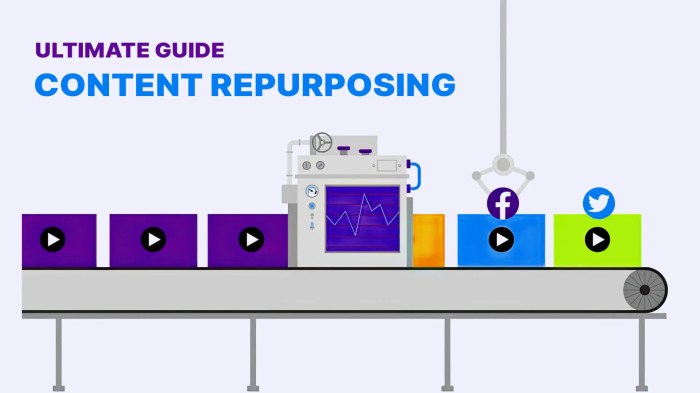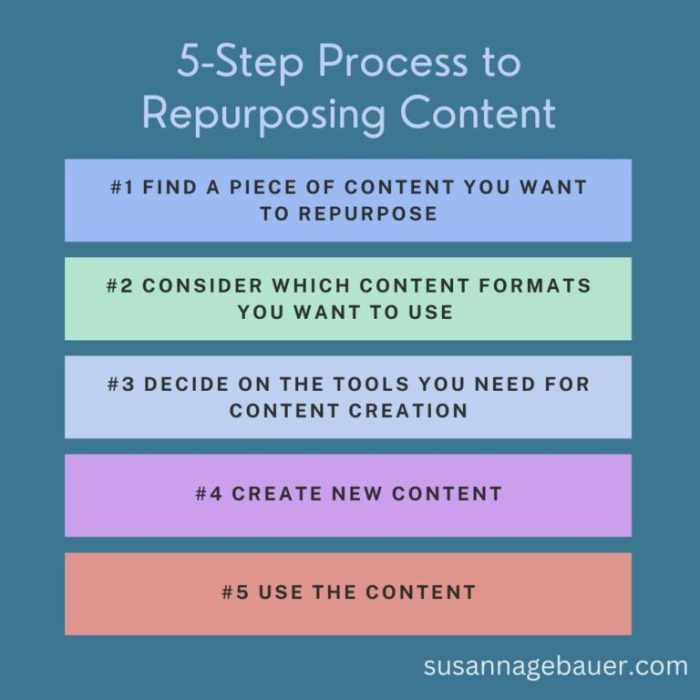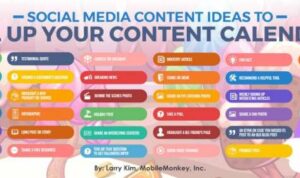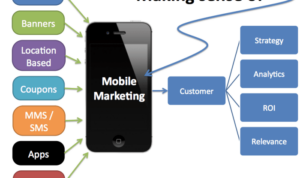Developing a Content Repurposing Plan opens the door to a whole new world of possibilities in the digital marketing realm. With a focus on efficiency and creativity, this plan paves the way for increased brand visibility and audience engagement.
Understanding Content Repurposing
Content repurposing is the process of taking existing content and reformatting it into different forms to maximize its reach and effectiveness. In digital marketing, content repurposing is crucial as it allows businesses to extend the lifespan of their content, reach new audiences, and improve overall brand visibility.
Examples of Successful Content Repurposing Strategies
- Turning a blog post into a series of social media posts
- Repurposing webinar content into an eBook or whitepaper
- Creating video tutorials from existing written guides
Benefits of Repurposing Content
Repurposing content not only helps with by providing fresh content for search engines to index but also enhances audience engagement by catering to different preferences. By repurposing content, businesses can reach new audiences who may prefer different formats and increase their brand visibility across various platforms.
How Content Repurposing Helps Reach New Audiences
Repurposing content allows businesses to tailor their message to different segments of their target audience. By presenting the same information in various formats, businesses can attract new followers on different platforms and increase their chances of reaching a wider audience base.
Creating a Content Repurposing Plan
To create an effective content repurposing plan, you need to follow a strategic approach that involves several key steps. By repurposing your content, you can reach a wider audience, increase engagement, and maximize the value of your existing content.
Identifying Suitable Content for Repurposing
- Look for evergreen content that remains relevant over time.
- Identify top-performing content based on engagement metrics.
- Consider content that can be updated or expanded to provide new insights.
Repurposing Content Across Platforms and Formats
Repurposing content across different platforms and formats requires careful planning and adaptation. Here are some tips to do it effectively:
- Optimize content for each platform’s specific requirements and audience preferences.
- Consider repackaging written content into visual formats like infographics or videos.
- Tailor the tone and style of the content to fit the platform you are targeting.
Setting Goals and KPIs for Measurement
To measure the success of your content repurposing plan, it’s essential to set clear goals and key performance indicators (KPIs).
- Define specific objectives such as increasing website traffic, social media engagement, or lead generation.
- Track metrics like page views, shares, conversions, and time spent on page to evaluate performance.
- Regularly analyze and adjust your content repurposing strategy based on the data and insights gathered.
Tools and Resources for Content Repurposing: Developing A Content Repurposing Plan

Content repurposing has become a crucial aspect of content marketing strategies, allowing businesses to maximize the value of their content across various platforms. To effectively repurpose content, professionals rely on a variety of tools and resources designed to streamline the process and enhance efficiency. These tools offer features that enable users to create new content formats, reach wider audiences, and ultimately drive more traffic and engagement.
Let’s explore some popular tools and software used for content repurposing:
Content Repurposing Tools
When it comes to repurposing content, having the right tools can make a significant difference in the efficiency and effectiveness of your strategy. Here are some popular tools and software used by content marketers:
- Canva: Canva is a graphic design platform that allows users to create visually appealing graphics, social media posts, infographics, and more. It offers a wide range of templates and design elements to help you repurpose your content in a visually engaging way.
- Buffer: Buffer is a social media management tool that enables users to schedule and publish posts across multiple platforms. By using Buffer, you can efficiently repurpose your content for different social media channels and reach a larger audience.
- HubSpot: HubSpot is an all-in-one marketing platform that offers tools for content creation, email marketing, social media management, and more. It provides valuable insights into your content performance and helps you optimize your repurposing strategy.
- Repurpose.io: Repurpose.io is a tool specifically designed for repurposing content. It allows you to automatically convert your podcast episodes into video format, create audiograms, and distribute your content across various platforms.
Benefits of Automation Tools
Automation tools play a crucial role in streamlining the content repurposing process, saving time and effort for content creators. By leveraging automation tools, you can:
- Repurpose content more efficiently and effectively
- Reach a wider audience across different platforms
- Consistently share valuable content without manual effort
- Track and analyze the performance of your repurposed content
Staying Updated on New Tools and Resources
As the content marketing landscape continues to evolve, staying updated on new tools and resources is essential for maintaining a competitive edge. Here are some tips for staying informed:
- Follow industry blogs, podcasts, and social media channels for the latest trends and updates
- Join online communities and forums to network with other professionals and share insights
- Attend webinars, workshops, and conferences to learn about new tools and strategies firsthand
- Subscribe to newsletters and email updates from leading content marketing platforms
Overcoming Challenges in Content Repurposing

When it comes to repurposing content, there are several challenges that content creators may face. However, with the right strategies and mindset, these challenges can be overcome effectively.
Maintaining Consistency and Quality, Developing a Content Repurposing Plan
One common challenge in content repurposing is maintaining consistency and quality across different formats. To overcome this challenge, it is essential to create a detailed style guide that Artikels key brand elements, voice, and tone. This guide will ensure that all repurposed content aligns with the original brand image.
- Regularly review and update the style guide to reflect any changes in branding or messaging.
- Provide training to content creators on how to maintain consistency when repurposing content.
- Utilize tools like Grammarly or Hemingway to ensure high-quality content.
Avoiding Cannibalization
Another challenge is repurposing content without duplicating or cannibalizing efforts. To address this challenge, it is crucial to:
- Conduct research to identify new s for repurposed content.
- Update meta tags, headings, and alt text to differentiate repurposed content from the original.
- Implement 301 redirects for any duplicate content to avoid penalties.
Repurposing Evergreen Content
Repurposing evergreen content can be challenging as trends and interests evolve over time. To keep evergreen content relevant and engaging, consider the following tips:
- Update statistics, examples, and references to ensure the content remains current.
- Add new visuals, infographics, or videos to enhance the content’s appeal.
- Create follow-up pieces that build upon the original evergreen content to provide fresh insights.












